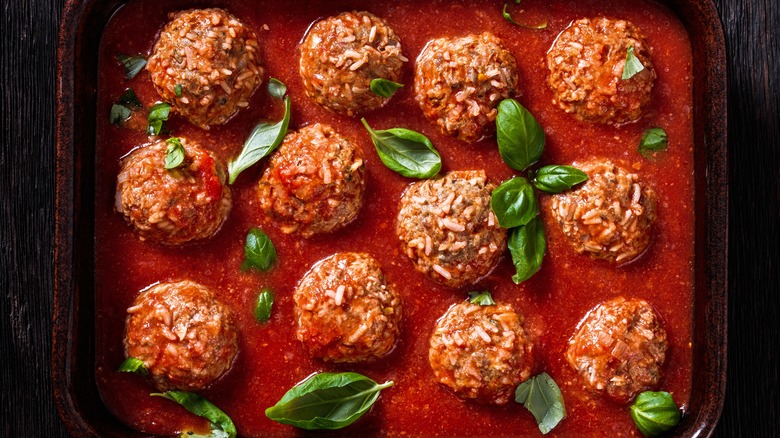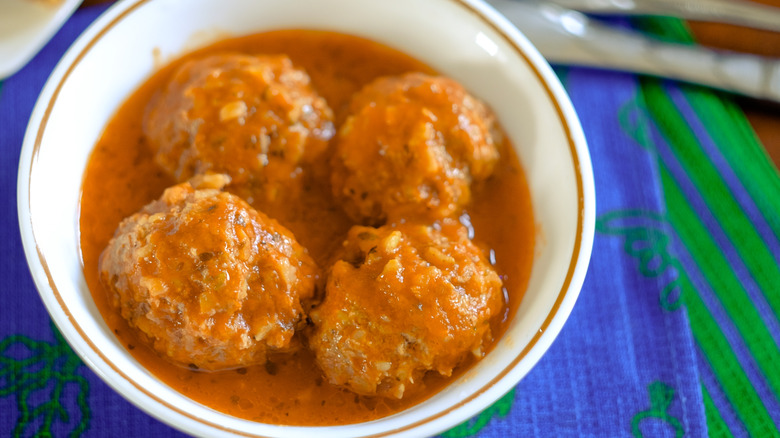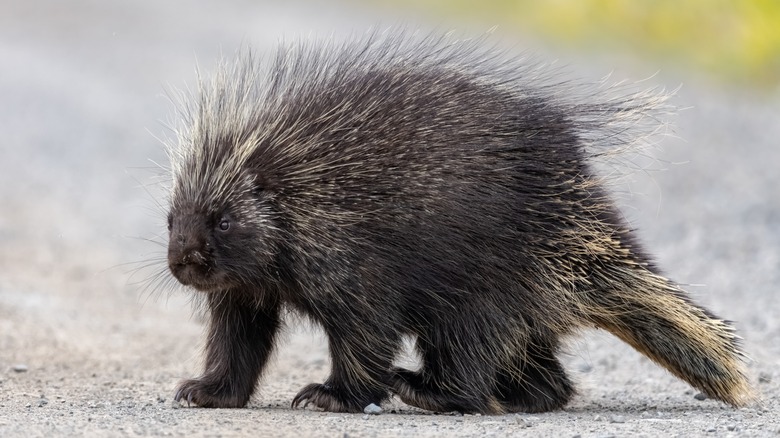Are Porcupine Meatballs Made With Actual Porcupine?
It's true that toad in the hole has no toad in it. Likewise, Rocky Mountain oysters are, well, not oysters. Not every name for a dish need be taken literally, but by that same token, those of us who are unfamiliar with a dish might be prone to do just that. So asking whether porcupine meatballs, that fun and retro dish, are actually made with porcupine is ultimately a legitimate question.
The answer is simple: no, porcupine meatballs do not contain porcupine. Most recipes call for regular old beef or pork. The interesting name more likely comes from the grains of rice that stick out of the meatballs, making them look spiny and spiky like, well, a porcupine.
This isn't just good news for people who might be concerned about finding an errant quill in their food. Even by the standards of specialty and exotic meats, porcupine seems to be a rare find. A quick browse on a site like Exotic Meat Market will yield all manner of meats unusual to contemporary Western palettes, including caiman and diamondback rattlesnake. A search for porcupine meat, however, will yield not the option to purchase porcupine, but stew meat made of nutria, which the company likely surmises to be the closest thing to porcupine.
A dish designed to help stretch ingredients
Though there are and have been plenty of cultures that do eat porcupine, the particular origins of porcupine meatballs would make such a protein a quizzical choice. Many recipes for porcupine meatballs — such as those at Taste of Home – place these origins during the Great Depression, with rice added to the meatballs presumably to help stretch the pork or beef. In fact, the recipe can be found at least a decade earlier, in "Conservation Recipes," a cookbook produced by the Mobilized Women's Organizations of Berkeley, California in 1918 to encourage Americans to conserve their food in assistance of the war effort. The book refers to them simply as "rice balls," but it is more or less the same exact recipe.
In any event, given how rare porcupine meat appears to be, at least by today's standards, it seems likely to be quite expensive. Including it in a dish whose whole aim is to stretch your pantry and your dollar further would seem to defeat the purpose.
That said, painful and troublesome quills notwithstanding, the size of the average adult porcupine would in theory provide enough for a substantial meal. They are one of the largest rodents found in North America, growing to around 20 pounds and two or three feet in length. They are also, in terms of species conservation, on the Least Concerned list, meaning that they are neither endangered nor vulnerable. In theory, hunting and eating porcupines should not be a problem.
Can you eat porcupine meat?
Though finding porcupine meat for sale may prove tricky, they have in fact been hunted and eaten for some time. According to McGill University's research on traditional animal foods of North America's Indigenous peoples, many pre-Columbian cultures have indeed consumed and eaten the porcupine. Though mostly eaten for sustenance, some parts were also consumed for medicinal or ritualistic purposes.
Callie Russell, who participated in Season 7 of History Channel's survival series "Alone," wrote on TheMeatEater.com about her experience of hunting, preparing, and eating porcupine while living in the sub-Arctic Canadian wilderness.
According to Russell, porcupines are easy to capture and kill because they are slow-moving and cannot easily hide. They are also very fatty animals, providing the necessary fat needed to survive out in the wild. "If I had to compare the taste of porcupine with a common food," wrote Russell, "it would be pork." Meaning that, should you be so inclined, it would be possible to make porcupine meatballs with actual porcupine, and without changing much in the way of flavor.
Still, given how difficult it can be to find porcupine meat for yourself, if you're cooking porcupine meatballs for the sake of conservation and convenience, you might just want to go with the traditional meats of pork or beef.


